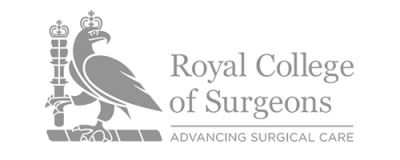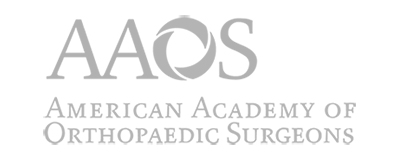LIGAMENT TEARS
There are four main ligaments that stabilise the knee:
Cruciate ligaments
Stabilise the knee to front-to-back forces:
Anterior Cruciate Ligament (ACL) and the Posterior Cruciate Ligament (PCL)
Collateral ligaments
Stabilise the knee to side-to-side forces:
Medial Collateral Ligament (MCL) and the Lateral Collateral Ligament (LCL)
All four main ligaments contribute to rotational stability but the most important in terms of rotation is the Anterior Cruciate Ligament. A collection of smaller ligaments at the back on the outer aspect of the knee (the posterolateral corner, PLC) also add further stabilisation to rotational forces. Any of these ligaments can be injured, and occasionally more than one is damaged. MRI scanning is very useful in knee ligament injuries as it clarifies the precise damage sustained, including tears of the menisci and articular cartilage.
MEDIAL COLLATERAL LIGAMENT (MCL) INJURY
The MCL is a broad ligament along the inner (medial) side of the knee attaching the femur to the tibia. It has two parts; a deep band that blends with the capsule of the knee joint and medial meniscus, and a superficial part that attaches to a broad area on the proximal part of the tibia underneath some of the hamstring tendons.
The mechanism of injury in MCL tears is usually an acute sideways force that pushes the knee inwards thus stretching the MCL (valgus injury). Depending on the amount of force, three degrees of severity of MCL tear are recognised. Pain is immediately felt along the inner side of the knee.
MCL Treatment
Most MCL injuries heal without surgery but require a period of time (6-12 weeks) in a knee brace. During this time, movement is encouraged as this helps healing. Surgery may be needed if there is an associated tear of either the medial or lateral meniscus (see Knee Arthroscopy).
If the Anterior Cruciate Ligament (ACL) ruptures at the same time, the knee should be braced for 6-8 weeks to allow the MCL to heal and the ACL reconstructed soon after this time (see Cruciate Reconstruction).
Physiotherapy is beneficial following MCL injury to regain range of movement and to strengthen muscles which become weaker after any knee injury.
LATERAL COLLATERAL LIGAMENT (LCL) INJURY
The LCL comes from the outer (lateral) side of the femur and attaches to the head of the fibula. It is rarely injured in isolation but is often involved with more complex knee ligament injuries, particularly combined injuries of the Posterior Cruciate Ligament (PCL) and the posterolateral corner (PLC).
LCL Treatment
Bracing and physiotherapy are usually sufficient for isolated LCL injuries.
ANTERIOR CRUCIATE LIGAMENT (ACL)
The ACL comes from the back of the femur within the knee and attaches to the middle of the top of the tibia. It stabilises the knee to forward translation and is important in rotational stability. The mechanism of injury in ACL ruptures is usually an acute forceful rotation. The most common history is of someone twisting on a bent knee such as a footballer or rugby player suddenly changing direction (‘cutting’ – causing forceful internal rotation on a flexed knee) and then suffering sudden, severe pain in the knee. The knee may give an audible ‘pop’ or ‘crack’ as the ligament ruptures and the knee gives way. Swelling is often impressive and occurs within a few hours. Sixty percent of knee injuries presenting to emergency departments with swelling will have an ACL injury.
Once completely torn the ACL ligament does not heal. Partial tears may heal but the ligament is often stretched causing the knee to give way: a partial tear may precede a complete rupture. If left untreated, the commonest symptom from ACL deficiency is instability. This occurs usually when one pivots, for example when attempting a sudden change in direction; the knee feels like it is going to give way. This usually prevents return to sporting activities.
Other ligaments and cartilages in the knee may be damaged at the time of ACL injury. Most commonly the medial collateral ligament (MCL) may tear and either the medial or lateral meniscus may tear. This may result in locking of the knee joint.
ACL Investigation & Treatment
If an ACL injury is suspected, referral to a specialist knee surgeon is recommended. Examination of the knee will reveal any instability – the tests used to assess the ACL are the anterior draw, Lachmann’s and pivot shift test.
Initial treatment is important to reduce swelling and improve range of motion by appropriate exercises. An x-ray is taken to exclude a fracture and occasionally an MRI scan is arranged to further assess the knee joint. It is quite common to see bone bruising on the MRI scan.
Occasionally there will be an associated tear of either of the menisci which is amenable to surgical repair – this should be undertaken as soon as possible as delay may compromise the results of repair.
Most knee surgeons would recommend reconstruction of the ACL in order to stabilise the knee and allow return to sporting activities. In addition, reconstructing the ACL may well protect the menisci from further damage as a result of persistent instability and may reduce the likelihood of osteoarthritis developing in later years (see Cruciate Reconstruction).
POSTERIOR CRUCIATE LIGAMENT (PCL)
The PCL is the largest of the knee ligaments and the strongest. It comes from the back of the tibia and attaches to the front of the femur within the knee. It stabilises the tibia to backwards translation.
Isolated PCL injuries are relatively uncommon but occur when the tibia is forced backwards whilst the knee is bent. The commonest mechanism of injury nowadays is from a direct blow from the dashboard as a result of a car crash but PCL injuries can also occur in sports when a fall or tackle forcibly pushes the tibia backwards.
PCL Investigation & Treatment
Examination of the PCL deficient knee usually reveals a posterior sag. Three grades are recognised according to the severity of the injury. Most isolated PCL injuries are Grade 1. Grade 3 injuries are associated with damage to the posterolateral corner (PLC) and are much more severe. These usually result in instability of the knee and should be assessed by a specialist knee surgeon.
Isolated Grade 1 injuries rarely cause symptoms of instability but the risk of development of osteoarthritis in later years in the medial and patellofemoral compartments is greatly increased. Reconstruction of the PCL does not appear to reduce this risk. Physiotherapy certainly helps by restoring muscle strength; the quadriceps muscles are vital in PCL deficient knees. Occasionally, the other ligaments around the knee can stretch with time as a result of deficiency of the PCL. Instability may then become problematic.
Combined PCL and posterolateral corner (PLC) injuries usually require surgical reconstruction. This is technically very demanding surgery and because the major nerves and blood vessels to the lower leg are close to the area of surgery there is a risk to these structures.
Discussion with Nadim is important to answer any questions that you may have. For information about any additional conditions not featured within the site, please contact us for more information.









